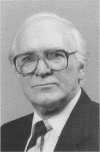Abstract
The history of cardiology encompasses some of the most revered names in medical history, many belonging to physicians who have advanced knowledge beyond their time. However, there have been countless others whose work in the basic sciences has paid large dividends to clinical cardiology. The original example of such an individual is William Harvey, whose reasoned experimentation led to the understanding of the circulation of blood. Another such man, Sir James Black, has contributed to basic scientific and clinical knowledge in cardiology, both as a physician and as a basic scientist. His invention of propranolol, the beta adrenergic receptor antagonist that revolutionized the medical management of angina pectoris, is considered to be one of the most important contributions to clinical medicine and pharmacology of the 20th century. His method of research, his discoveries about adrenergic pharmacology, and his clarification of the mechanisms of cardiac action are all strengths of his work. In 1988, he was awarded the Nobel Prize in Medicine. Sir James's conclusions and method of research have continued to influence work in clinical pharmacology and cardiovascular medicine. Thus, the development of propranolol runs parallel to most other great achievements in medicine: the genius of a few builds on the accomplishments of many, and the discovery influences thinking long after the breakthrough has occurred.
Full text
PDF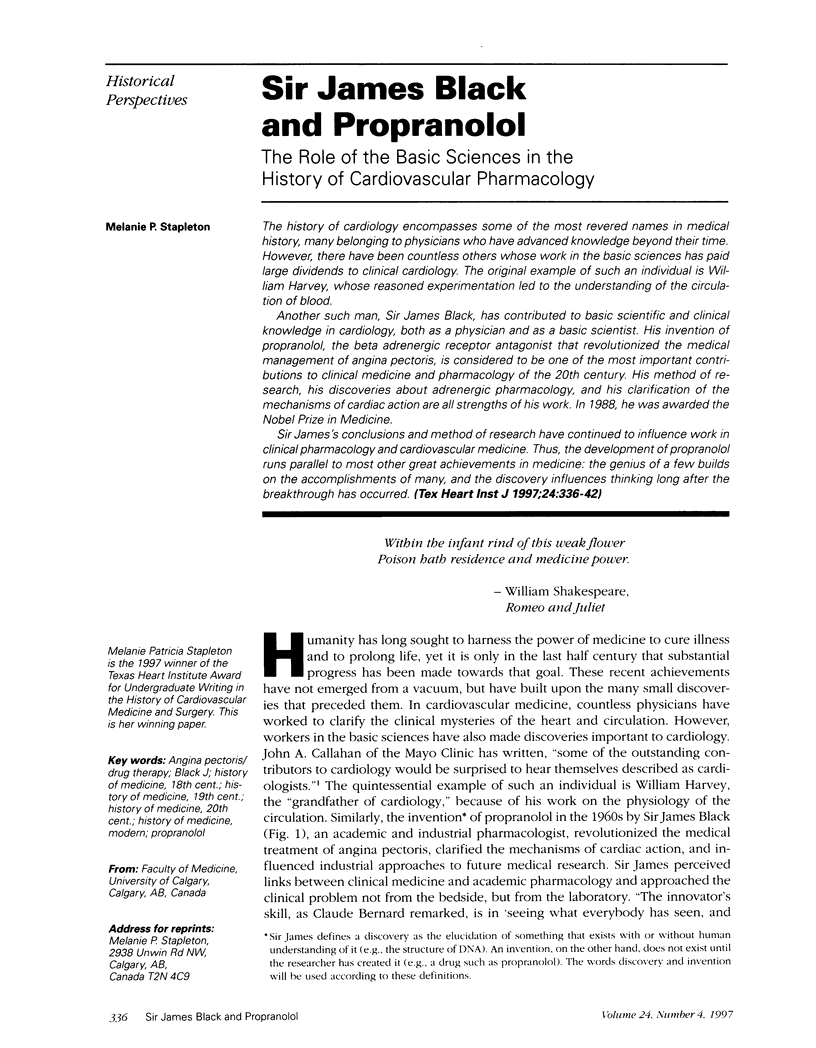
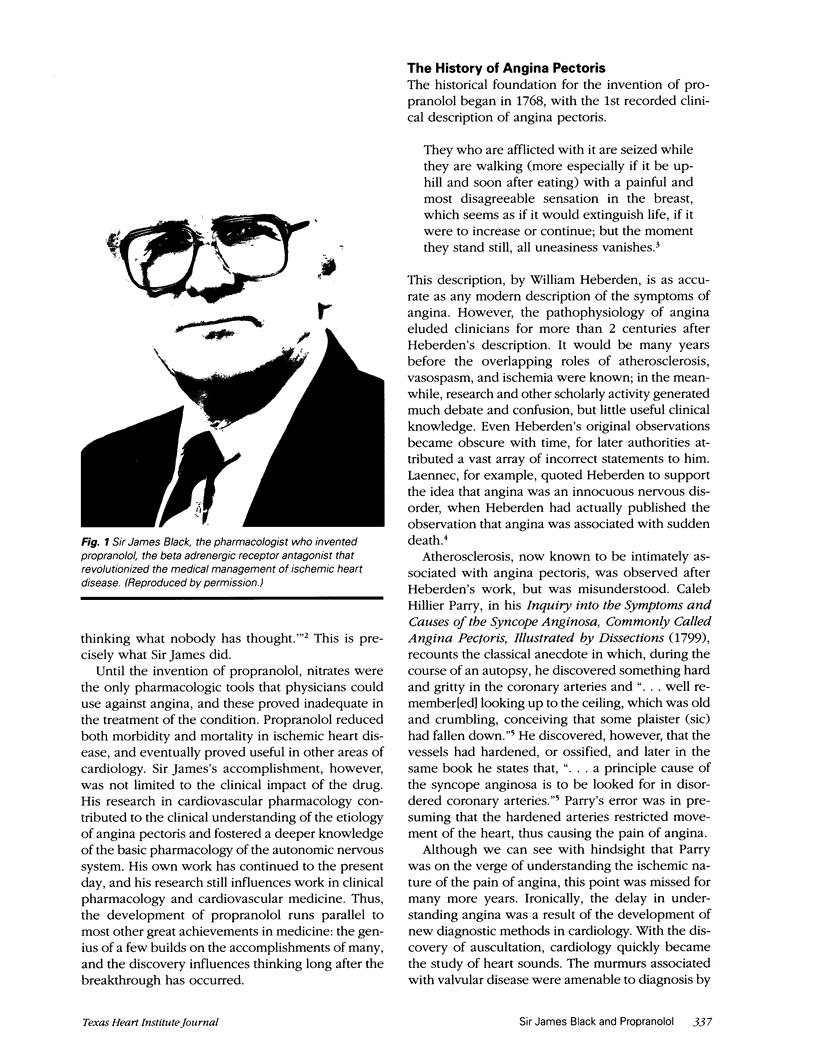
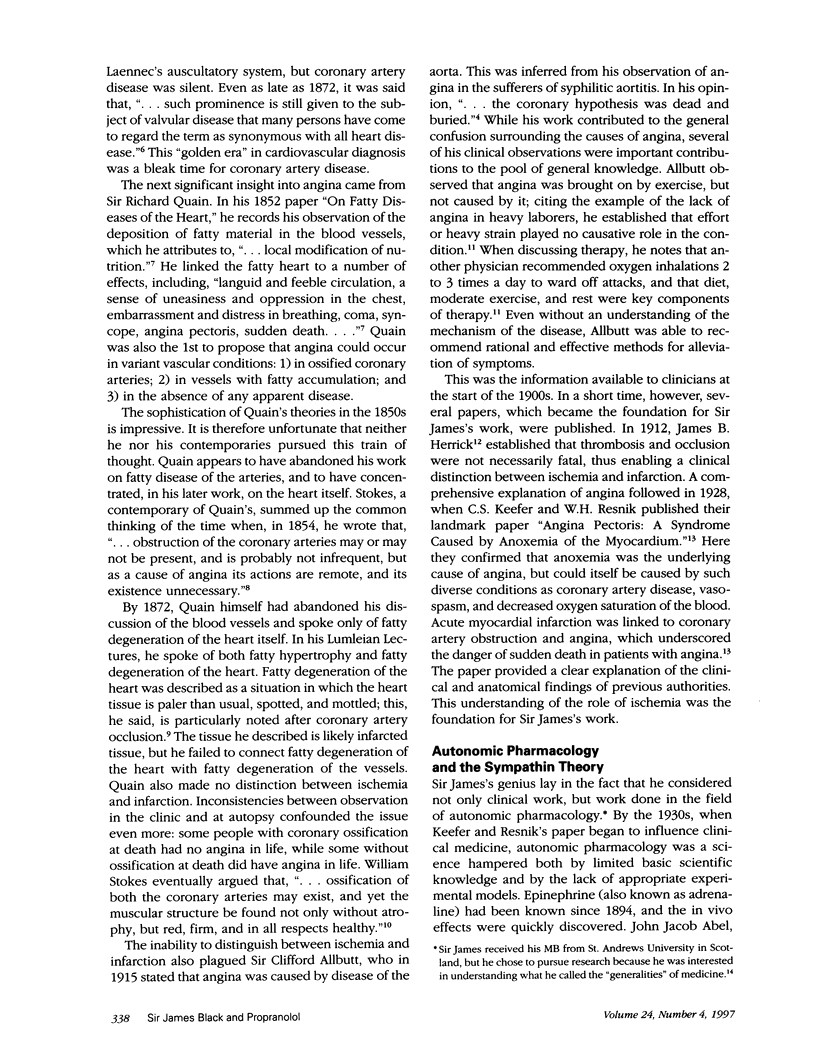
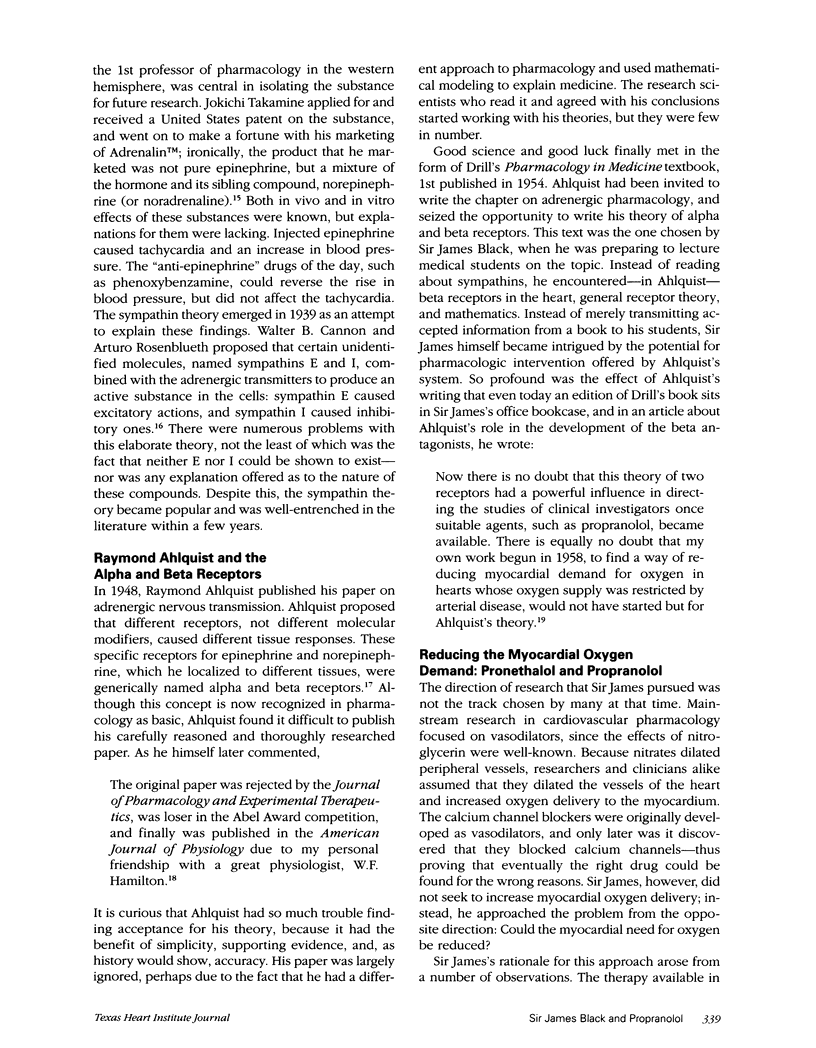
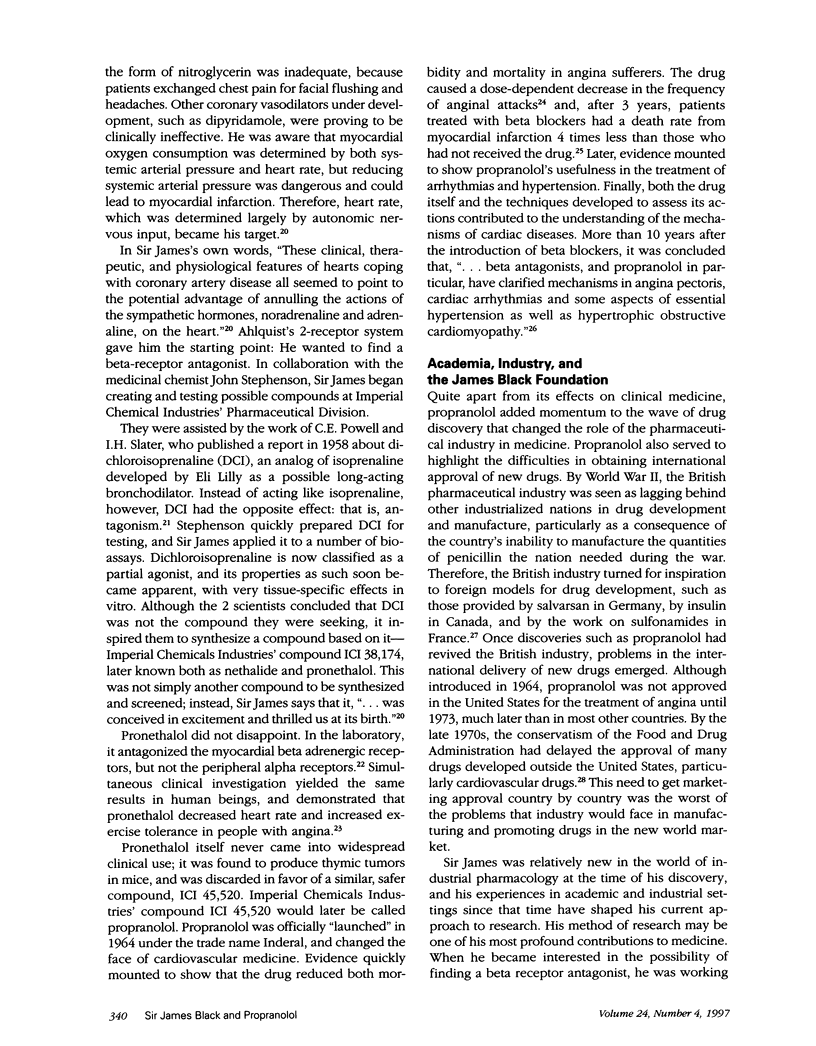
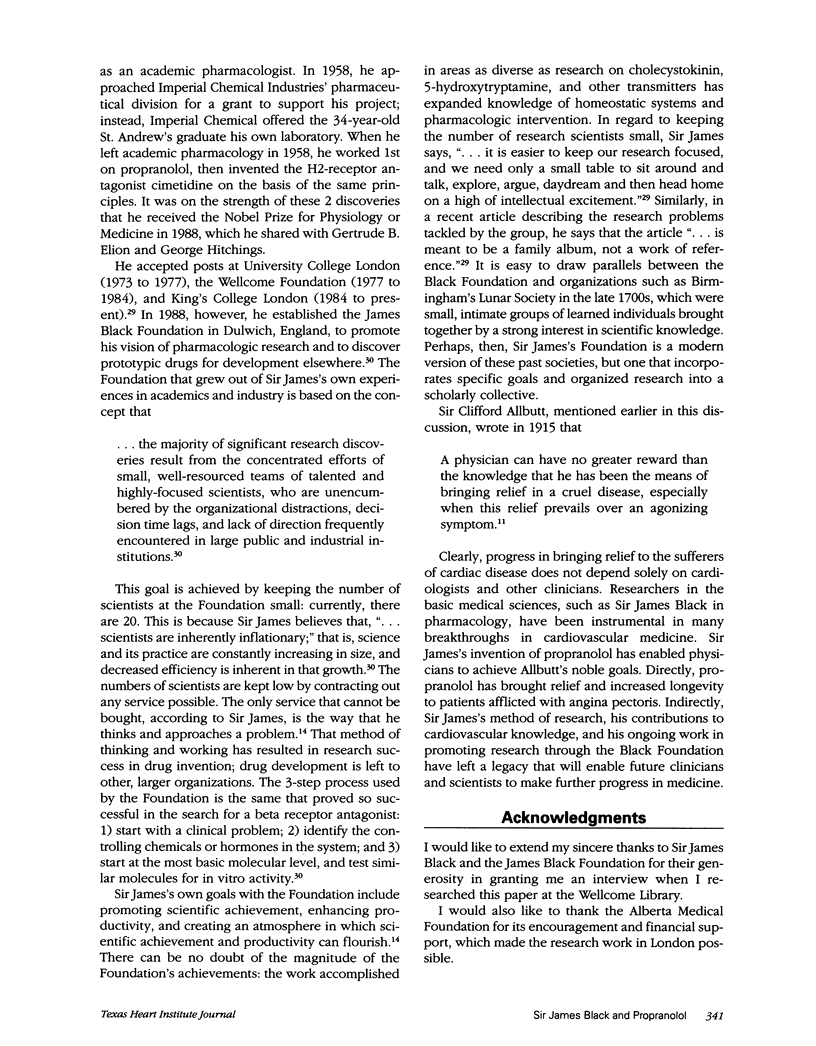
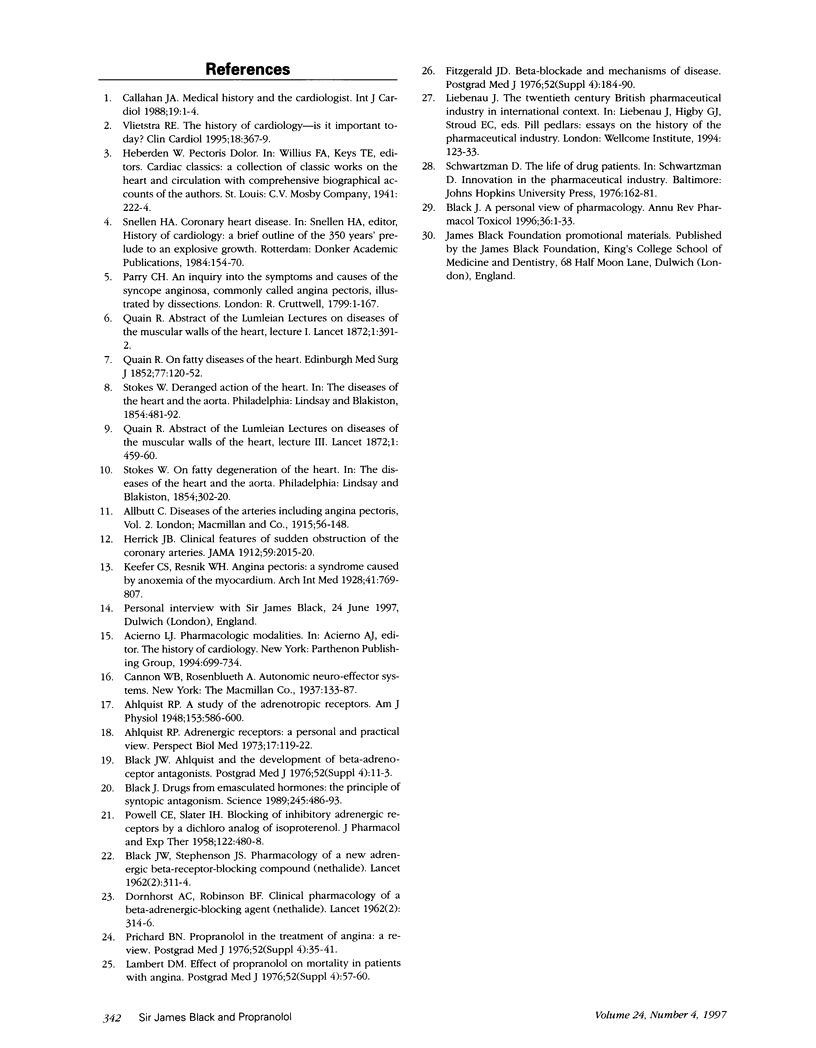
Images in this article
Selected References
These references are in PubMed. This may not be the complete list of references from this article.
- Ahlquist R. P. Adrenergic receptors: a personal and practical view. Perspect Biol Med. 1973 Autumn;17(1):119–122. doi: 10.1353/pbm.1973.0047. [DOI] [PubMed] [Google Scholar]
- BLACK J. W., STEPHENSON J. S. Pharmacology of a new adrenergic beta-receptor-blocking compound (Nethalide). Lancet. 1962 Aug 18;2(7251):311–314. doi: 10.1016/s0140-6736(62)90103-4. [DOI] [PubMed] [Google Scholar]
- Black J. W. Ahlquist and the development of beta-adrenoceptor antagonists. Postgrad Med J. 1976;52 (Suppl 4):11–13. [PubMed] [Google Scholar]
- Black J. A personal view of pharmacology. Annu Rev Pharmacol Toxicol. 1996;36:1–33. doi: 10.1146/annurev.pa.36.040196.000245. [DOI] [PubMed] [Google Scholar]
- Black J. Drugs from emasculated hormones: the principle of syntopic antagonism. Science. 1989 Aug 4;245(4917):486–493. doi: 10.1126/science.2569237. [DOI] [PubMed] [Google Scholar]
- Callahan J. A. Medical history and the cardiologist. Int J Cardiol. 1988 Apr;19(1):1–4. doi: 10.1016/0167-5273(88)90183-0. [DOI] [PubMed] [Google Scholar]
- DORNHORST A. C., ROBINSON B. F. Clinical pharmacology of a beta-adrenergic-blocking agent (Nethalide). Lancet. 1962 Aug 18;2(7251):314–316. doi: 10.1016/s0140-6736(62)90104-6. [DOI] [PubMed] [Google Scholar]
- Fitzgerald J. D. Beta-blockade and mechanisms of disease. Postgrad Med J. 1976;52 (Suppl 4):184–190. [PubMed] [Google Scholar]
- Lambert D. M. Effect of propranolol on mortality in patients with angina. Postgrad Med J. 1976;52 (Suppl 4):57–60. [PMC free article] [PubMed] [Google Scholar]
- POWELL C. E., SLATER I. H. Blocking of inhibitory adrenergic receptors by a dichloro analog of isoproterenol. J Pharmacol Exp Ther. 1958 Apr;122(4):480–488. [PubMed] [Google Scholar]
- Prichard B. N. Propranolol in the treatment of angina: a review. Postgrad Med J. 1976;52 (Suppl 4):35–41. [PubMed] [Google Scholar]
- Vlietstra R. E. The history of cardiology--is it important today? Clin Cardiol. 1995 Jul;18(7):367–369. doi: 10.1002/clc.4960180703. [DOI] [PubMed] [Google Scholar]



